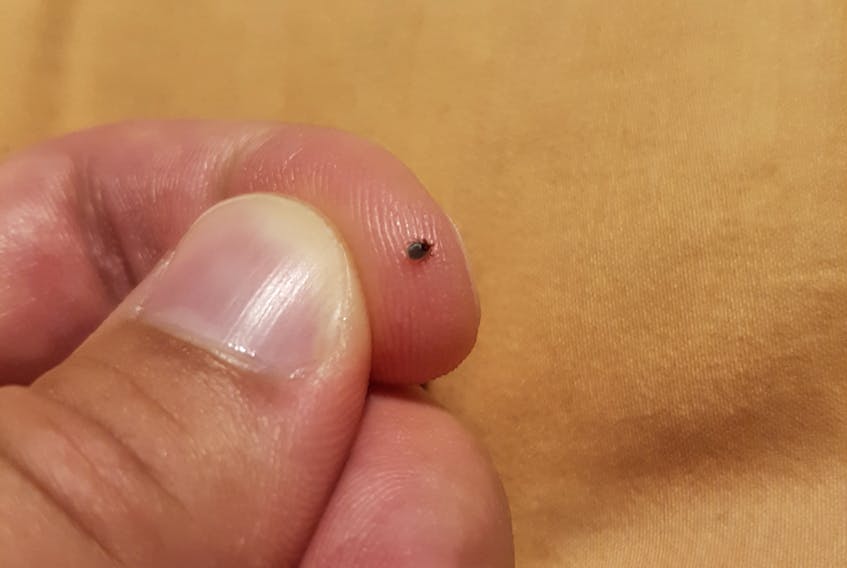Health P.E.I. is asking members of the public to submit samples of biting ticks for a study tracking the human risk of tick-borne illness on Prince Edward Island.
Greg German, Health P.E.I. medical microbiologist, said the laboratory he works at receives about 80 ticks a year from family and emergency room doctors, but he wants to try to get more, especially the smaller-sized ticks which can be the size of a poppy seed.
Islanders can bring ticks to any Health P.E.I. lab for analysis if they were directly attached to a human.
Lab locations and hours are listed here: princeedwardisland.ca/en/information/health-pei/laboratory-services. Tick collection kits are also available at these locations.
Any black legged ticks will be sent to the National Microbiology Laboratory to be screened for pathogens such as those that cause Lyme disease and other tick-borne diseases.
This analysis will not replace testing of those patients who show symptoms of a tick-borne illness or those who have health concerns due to a tick bite.
Islanders are reminded to follow safety tips to help reduce the risk of tick bites, infection and Lyme disease.
They include checking themselves and their family after being in an area where ticks may be present, walking in the centre of trails to avoid grass, brush or shrubs, tucking pant legs into boots or socks, wearing light-colored clothing to avoid attracting the attention of a tick, using an insect repellent such as DEET (for persons six months or older), showering after being in an area where ticks are present (can cause them to detach before they firmly attach) and removing any ticks attached to skin quickly and safely (Lyme disease is unlikely if you remove a tick within 24-36 hours).
To remove a tick, use tweezers, grasp the tick close to the skin and pull upwards.
People should also see a doctor if flu-like symptoms or a rash develop, submit ticks to a P.E.I. lab for analysis using tick collection kit and be aware of the risk of ticks carrying Lyme disease when visiting other parts of Canada and the United States.
For more information on Lyme disease, visit princeedwardisland.ca/en/information/health-and-wellness/lyme-disease-pei.









